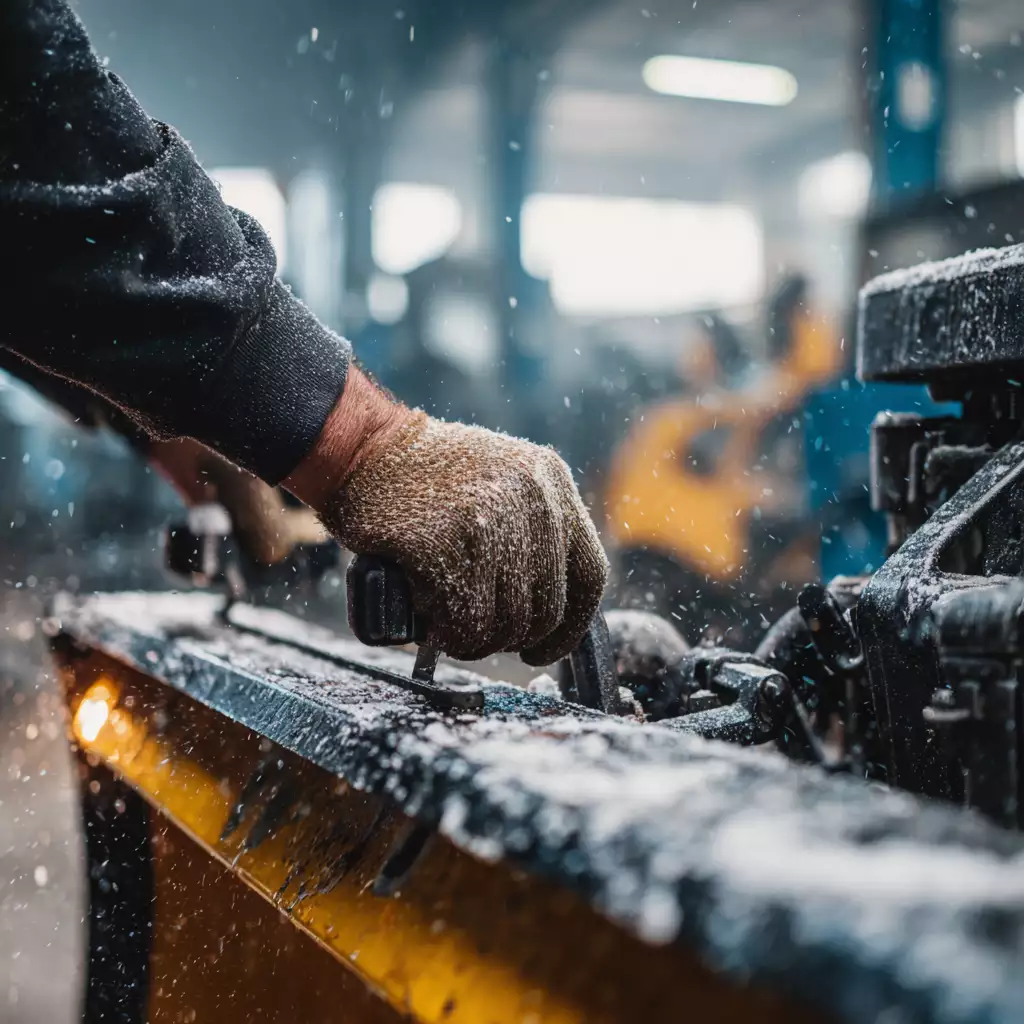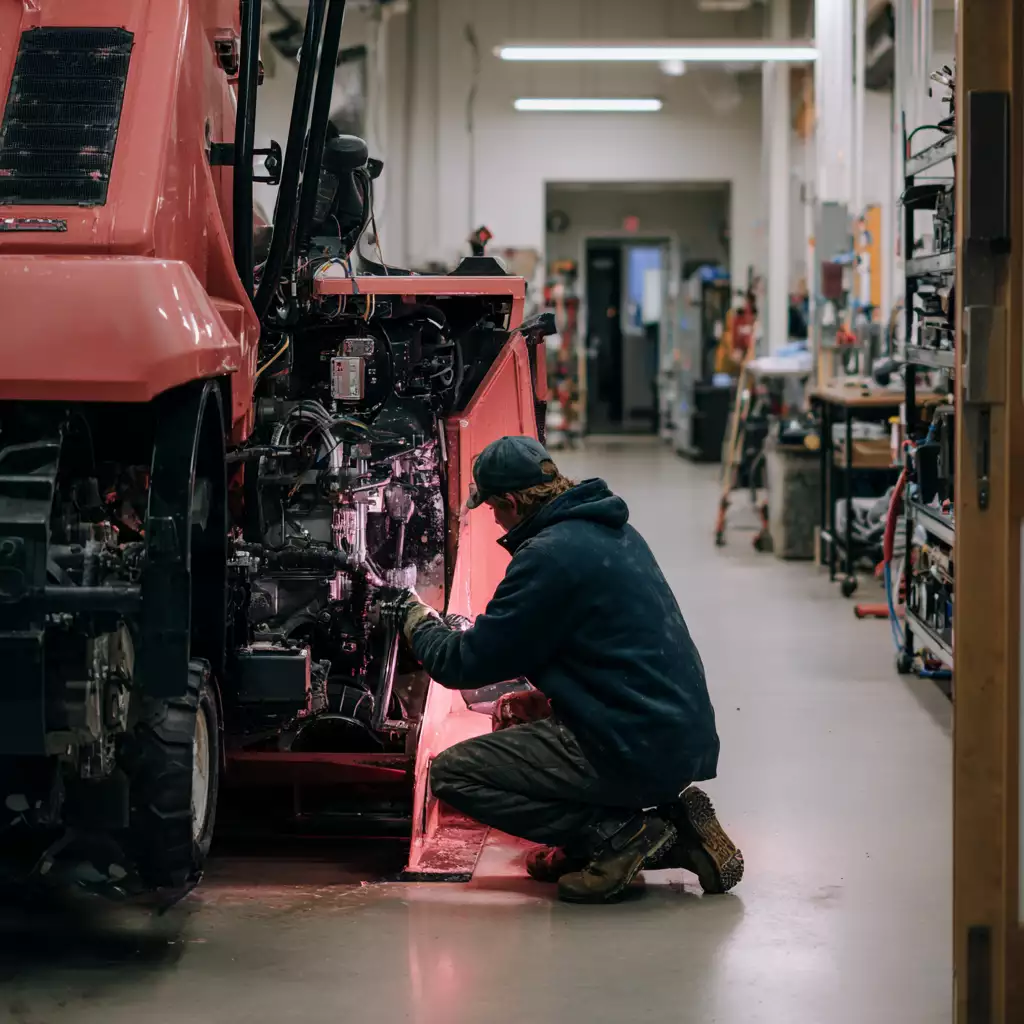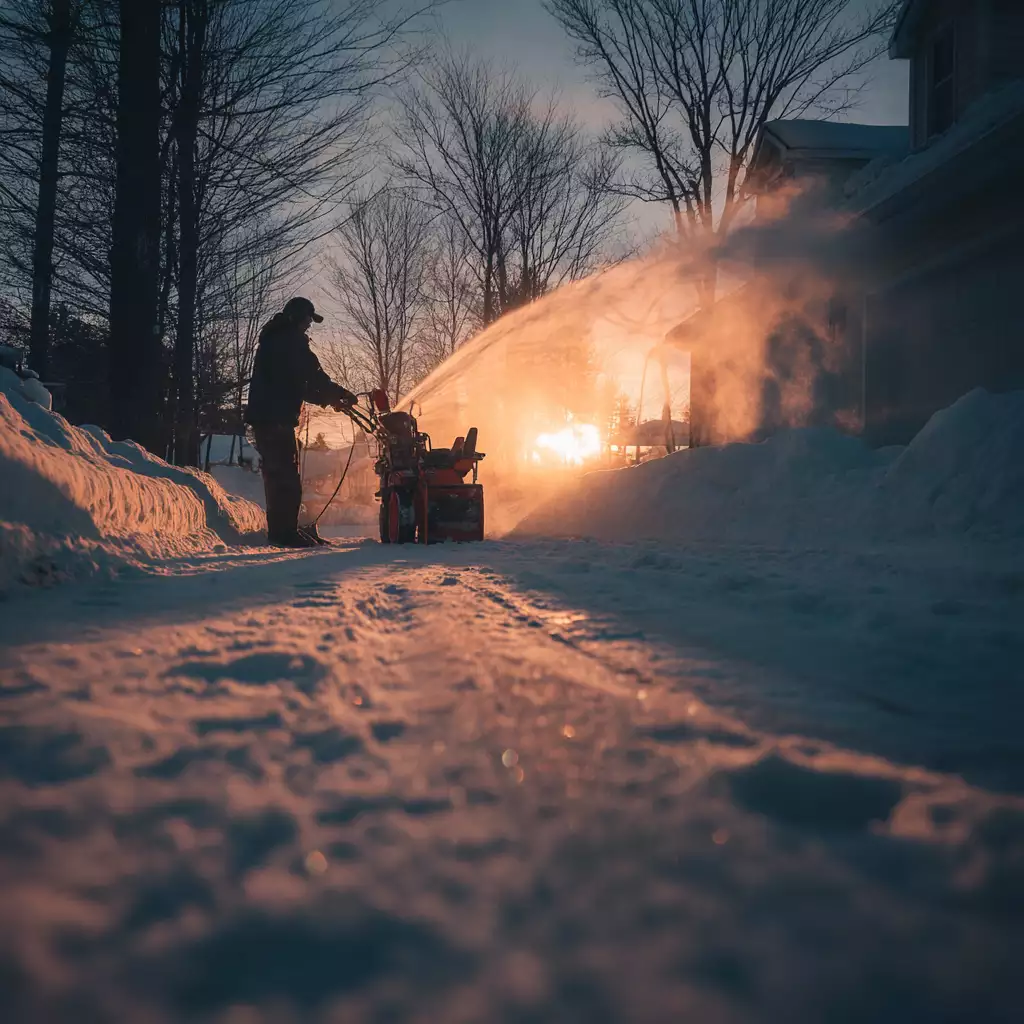New England storms do not wait for you to get your equipment in shape. If your snowblower sits all summer, a few small problems can grow into breakdowns on the first heavy push of the season. That is why a clear snow blower service checklist matters. It saves time, protects your investment, and helps you avoid shoveling a long driveway after dark.
This guide covers five unmistakable signs your machine needs attention before winter. You’ll learn what to look for, what you can do in your own garage, and when it’s time to schedule service in North Hampton with the certified team at Seacoast Power Equipment. If you hit a snag, our local snowblower repair page makes it easy to get help fast.
A Quick Snow Blower Service Checklist Before Winter
Fuel and intake
- Empty stale gas and refill with fresh fuel and stabilizer.
- Inspect fuel lines for cracks or leaks.
- Replace a clogged air filter.
Ignition and starting system
- Pull and inspect the spark plug. Replace if worn.
- Test the electric starter and charge or replace the battery.
Belts and drive
- Check auger and drive belts for glazing or fraying.
- Inspect the friction disc for glazing or cracks.
Auger, impeller, and chute
- Replace missing shear pins.
- Confirm chute rotation and impeller spin.
Wear items and set up
- Measure scraper bar wear and adjust skid shoes.
- Inspect tires or tracks and inflate as needed.
Controls and safety
- Verify auger and drive levers engage and release cleanly.
- Test the operator presence control.
- Keep a clean-out tool nearby and never use your hands in the chute.
If anything feels rough or unusual, plan a pre-season tune with our Service Department.
Sign 1: Hard Starting or No Start After Storage
Stale fuel, gummed carburetors, fouled plugs, or weak batteries are common after long storage.
DIY checks: Replace old fuel, inspect and replace the spark plug, charge the battery, and ensure the plug boot is snug.
When to call for service: If the machine only runs with the choke on, stalls under load, or the recoil sticks. These issues point to deeper carburetor or ignition problems. Book through Contact Us or request pickup and delivery.
Sign 2: Weak Throwing Distance or Uneven Snow Discharge
If snow clumps instead of throwing clear:
Causes: Worn auger paddles, stretched belts, clogged chute, or a mis-set scraper bar.
DIY: Clear the chute, adjust belts, and check skid shoe settings.
If throwing distance doesn’t improve, schedule snowblower repair.
Sign 3: New Vibration, Squeal, Rattle, or Grinding
Noise often means trouble: a loose pulley, worn bearing, or missing shear pin.
DIY checks: With the machine off and unplugged, spin the auger and impeller by hand, inspect pulleys for wobble, and tighten obvious bolts.
If vibration persists, stop use and book diagnostics with Service. Our parts counter stocks most replacements for fast turnaround.
Sign 4: Drive System Slips, Lurches, or Will Not Engage
Creeping or surging points to a worn friction disc, stretched cables, or a weak drive belt.
DIY: Raise wheels, test for slip, and adjust cables.
Leave it to the pros: Friction disc replacement and drive adjustments require precision. If needed, plan pickup and delivery for convenience.
Sign 5: Wear On Skid Shoes, Scraper Bar, Belts, or Shear Pins
These parts protect the housing and drivetrain.
Checks:
- Flip skid shoes if worn.
- Replace a beveled or uneven scraper bar.
- Swap belts that show cracks or glazing.
- Carry spare shear pins to prevent bigger damage.
Visit our parts counter or explore new snowblowers if your machine is nearing retirement.
Safety First Every Time You Service or Operate
- Shut off the engine, remove the key, and disconnect the spark plug before service.
- Use a clean-out tool for chute clogs.
- Refuel outdoors only when the engine is cool.
- Keep people clear of the discharge path.
Refresh safe practices with our snow equipment safety tips.
Local Readiness For New Hampshire Storms
North Hampton storms range from heavy wet snow to icy bursts. Booking service in the fall ensures your unit is ready before the first plow berm hits your drive. If timing is tight, arrange pickup and delivery.
How This Snow Blower Service Checklist Prevents Mid-Storm Breakdowns In NH
New Hampshire’s mix of early slush and late powder strains snowblowers. A preseason check prevents the most common failures:
- Fresh fuel and a clean spark plug help cold starts.
- Replacing glazed belts stops squealing and slipping.
- Cleaning the chute and checking impeller play keeps snow moving.
- Adjusting skid shoes and scraper bars prevents scraping or ice films.
- Spare shear pins keep you running through plow berms.
Taking these steps now means less downtime when storms arrive.

Pro Tips For Landscapers, Property Managers, And Busy Crews
A simple weekly check prevents route delays:
- Keep bins stocked with belts, scraper bars, and shear pins.
- Replace cables at the first sign of fray.
- Use dated gas cans to avoid fuel problems.
- Schedule a mid-season belt and cable inspection in January.
If a machine keeps failing, compare repair costs with age. Sometimes it’s smarter to invest in new snowblowers for efficiency.
When Repair Stops Making Sense
Repeated breakdowns add up. If repairs approach a large share of the machine’s value or the engine shows poor compression, step into a newer model. Our team can help match snowblowers to your driveway and storm history.
Common Problems And Straightforward Fixes
| Symptom | Likely cause | Action / When to contact Seacoast |
| Won’t start after storage | Stale fuel, fouled plug, weak battery | Replace the fuel and plug, and charge the battery. If it still won’t run, schedule service. |
| Starts but surges | Dirty carb jet, air leak | Add fresh fuel, and check clamps. If it continues, book a carb clean. |
| Throws only a few feet | Loose belt, clogged chute, worn impeller | Adjust belt, clear chute. If no change, book repair. |
| Loud squeal | Glazed belt, dry bearing | Replace worn parts. Stop use if noise persists. |
| Drive slips on hills | Worn friction disc, stretched cable | Adjust cable. If it still slips, replace the disc. |
| Chute rotation fails | Loose cable, iced gear | Thaw or replace the cable. If gears grind, service is needed. |

Frequently Asked Questions: Snow Blower Service Checklist Essentials
How early should I schedule a pre-season tune-up in New Hampshire?
Early fall is ideal. If time is short, request pickup and delivery.
What belongs on a basic snow blower service checklist for homeowners?
Fuel refresh, spark plug check, belt inspection, chute cleaning, scraper bar setup, shear pin check, cable adjustments, and a short test run. If it struggles, schedule service.
My snowblower starts but bogs down under load. What should I do first?
Check belts, chute, and scraper bar setup. If it still loses power, book snowblower repair.
How do I avoid fuel-related problems after storage?
Drain stale gas, use stabilizer, and run the machine monthly if possible.
When is one replacement smarter than another repair?
If repairs approach a large share of the unit’s value or the engine shows wear, review snowblower options with our team.
Helpful Seacoast Reads To Keep You Ready All Season
- Snow equipment safety tips
- Snowblower troubleshooting guide
- Generator maintenance schedule
- Winter equipment care tips
Schedule Your Pre-Season Service Today
A short pre-season appointment now can save hours on a windy night later. If the checklist flagged any issues, reach out to our local team in North Hampton today. Call, request pickup and delivery, or send a message through Contact Us. We keep a deep bench of parts, service all major brands, and stand behind our work for New Hampshire families and pros.

